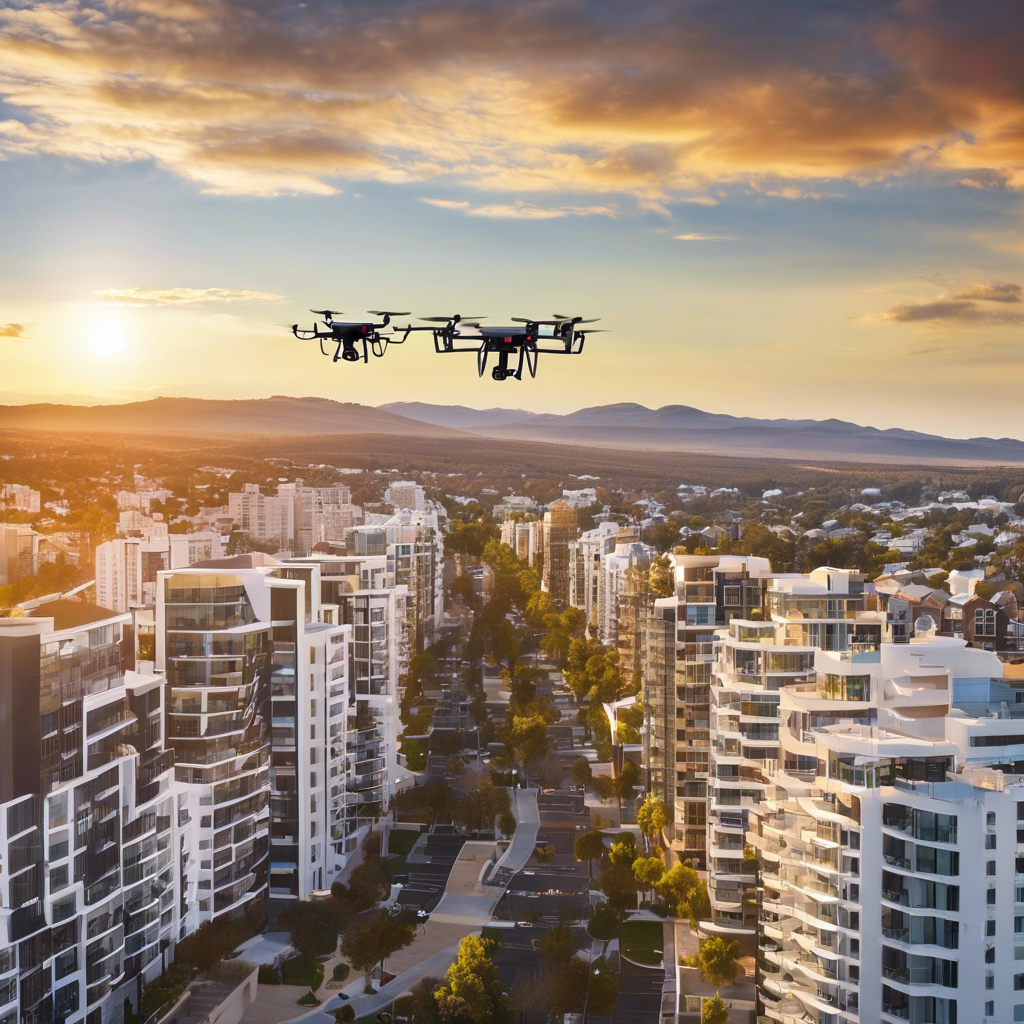Drones have revolutionized modern real estate marketing, offering a fresh and dynamic perspective that was previously impossible to achieve. With high-quality aerial imagery and video, real estate professionals can now showcase properties in a way that captivates potential buyers, providing them with a comprehensive view of the home and its surroundings. These aerial visuals are not just aesthetically appealing; they also offer practical insights, such as proximity to amenities, neighborhood layout, and unique property features that ground-level photography cannot capture. As competition in the real estate market intensifies, drone technology has emerged as a powerful tool to attract buyers and create compelling property listings.
One of the most significant advantages of drones in real estate marketing is their ability to highlight large properties, estates, and commercial buildings effectively. Traditional photography struggles to convey the true scale of a property, but drone footage provides a complete, bird’s-eye view of the land, landscaping, and surrounding areas. This is particularly beneficial for luxury homes, farmland, resorts, and waterfront properties, where the environment plays a crucial role in a buyer’s decision-making process. Aerial shots showcase pools, gardens, driveways, and outdoor entertainment areas in a way that ground-level shots simply cannot.
Beyond still images, drones offer dynamic video tours that make listings far more engaging. A professionally edited aerial video can take potential buyers on a guided journey from above, sweeping through the neighborhood before zooming in on key features of the property. This cinematic experience helps buyers visualize themselves living in the home, making an emotional connection before they even visit in person. Video marketing has become a dominant force in digital advertising, and drone footage elevates real estate listings to an entirely new level, setting them apart from traditional listings.
Drones are also invaluable for marketing real estate developments before construction is completed. Developers can use drones to capture the land, providing prospective buyers with a preview of the location before a single brick is laid. With the help of CGI overlays, marketers can integrate digital renderings of the finished buildings onto aerial drone footage, allowing buyers to see how the completed project will look within its surroundings. This technique is particularly effective for large-scale residential communities, commercial complexes, and urban developments, where buyers need to visualize the potential of a space.
Virtual tours have gained massive popularity in the real estate industry, and drones enhance this experience by offering seamless transitions between exterior and interior footage. A well-executed drone tour can start with an aerial view of the neighborhood, glide towards the property, enter through the front door, and transition smoothly to interior shots, giving buyers an immersive, 360-degree view of the home. This approach not only keeps viewers engaged but also increases the likelihood of serious inquiries, as potential buyers can explore every angle of the property before scheduling a physical visit.
Marketing real estate through drone technology is not just about visuals; it also improves the efficiency of the sales process. Agents can prequalify buyers more effectively by providing them with detailed aerial footage, reducing the number of unnecessary showings. Buyers who have already seen a comprehensive drone tour online are more likely to visit only if they have a genuine interest in the property. This saves time for both buyers and sellers, streamlining the real estate transaction process.
In addition to residential properties, commercial real estate benefits greatly from drone marketing. Investors and business owners looking for office buildings, warehouses, or retail spaces appreciate a detailed overview of the location, accessibility, parking facilities, and surrounding businesses. Aerial footage allows them to assess the property’s strategic position within the community, traffic flow, and overall appeal, making their decision-making process more informed.
Drone technology has also expanded real estate marketing beyond just property listings. Many realtors now use drones for branding purposes, creating compelling social media content that highlights their expertise and market presence. From showcasing entire neighborhoods to capturing local landmarks, drone footage helps agents establish themselves as industry leaders and attract more clients. High-quality aerial imagery and videos are highly shareable on platforms like Instagram, YouTube, and Facebook, increasing engagement and visibility for real estate professionals.
Regulations surrounding drone usage in real estate marketing vary by location, but compliance with local laws is essential. In many countries, commercial drone pilots must obtain proper certification and adhere to flight restrictions. Hiring a licensed drone operator ensures high-quality footage while avoiding legal complications. Some real estate agencies invest in in-house drone pilots, while others collaborate with professional drone service providers to create visually stunning marketing materials.
As technology continues to advance, the role of drones in real estate marketing will only expand. Innovations such as AI-powered drone analytics, automated flight paths, and 3D mapping are set to enhance the capabilities of drones even further. The future of real estate marketing is increasingly digital, and drones are at the forefront of this transformation, providing an unparalleled way to showcase properties, attract buyers, and drive sales.

